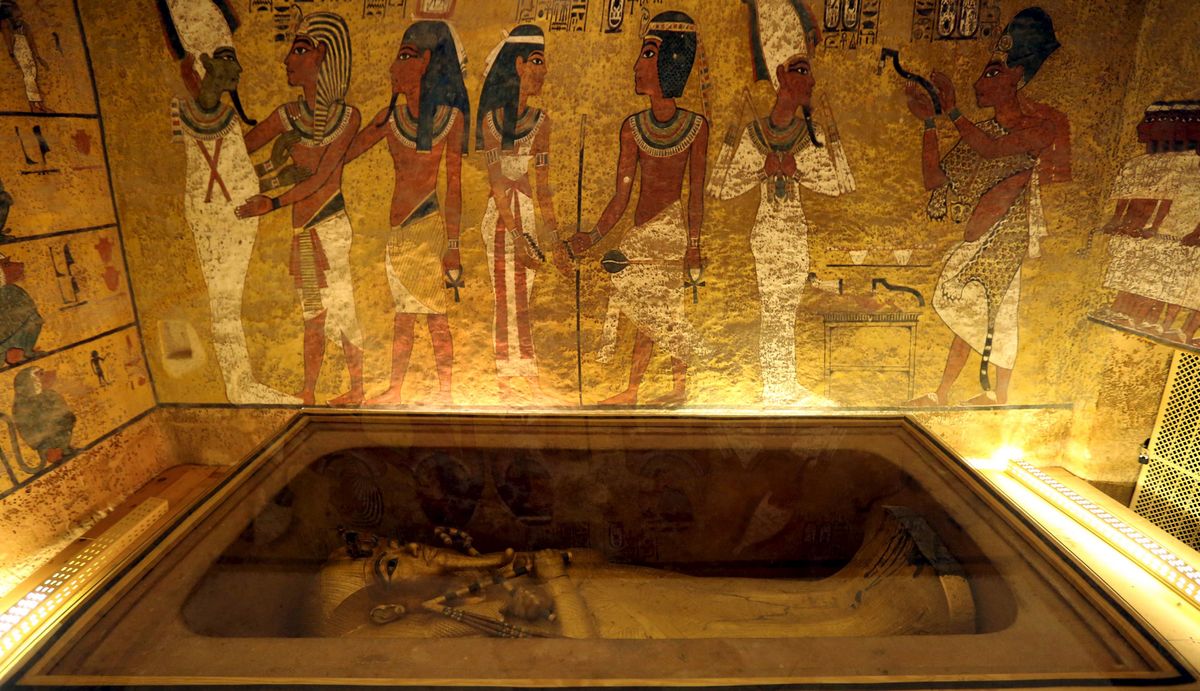
9 incredible treasures discovered in Tutankhamun’s tomb
Tutankhamun’s tomb, discovered by archaeologists in the Valley of the Kings on November 4, 1922, was found loaded with treasures. Some of these artifacts, like his death mask, are widely known. But others, such as a mannequin that may have helped the boy king choose what to wear, are less well-known but offer insight into Tutankhamun’s life. Here are nine fascinating treasures from Tutankhamunthe tomb and what they reveal about the iconic ancient egyptian of the pharaoh 100 years after the discovery of his remains.
1. Death mask
Tutankhamun’s death mask is probably the most famous artifact found in his tomb. The ornate 21-inch (53-centimeter) long mask placed over Tut’s face was made mostly of gold encrusted with semi-precious stones and colored glass paste” and weighs a whopping 22 pounds (10 kilograms), Halal Ali Hassan, professor emeritus in the mechanical design department at Cairo University, wrote in a 2016 article published in the International Journal of Advances in Engineering, “Eyes Made of Obsidian and Quartz “, Hassan wrote, noting that the mask depicts Tutankhamun with a long beard and a headdress with the image of a cobra and a vulture.
On the back of the death mask is a spell from The book of the deadwritten in hieroglyphs, which “guaranteed the ability of the mask to perform the function of the face of the deceased”, Marianne Eaton-Kraus (opens in a new tab)senior researcher at the American Research Center in Egypt, wrote in her book “Unknown Tutankhamun (opens in a new tab)” (Bloomsbury, 2016). She noted that the third innermost coffin in which Tutankhamun was buried had the same spell written on it.
2. Iron daggers
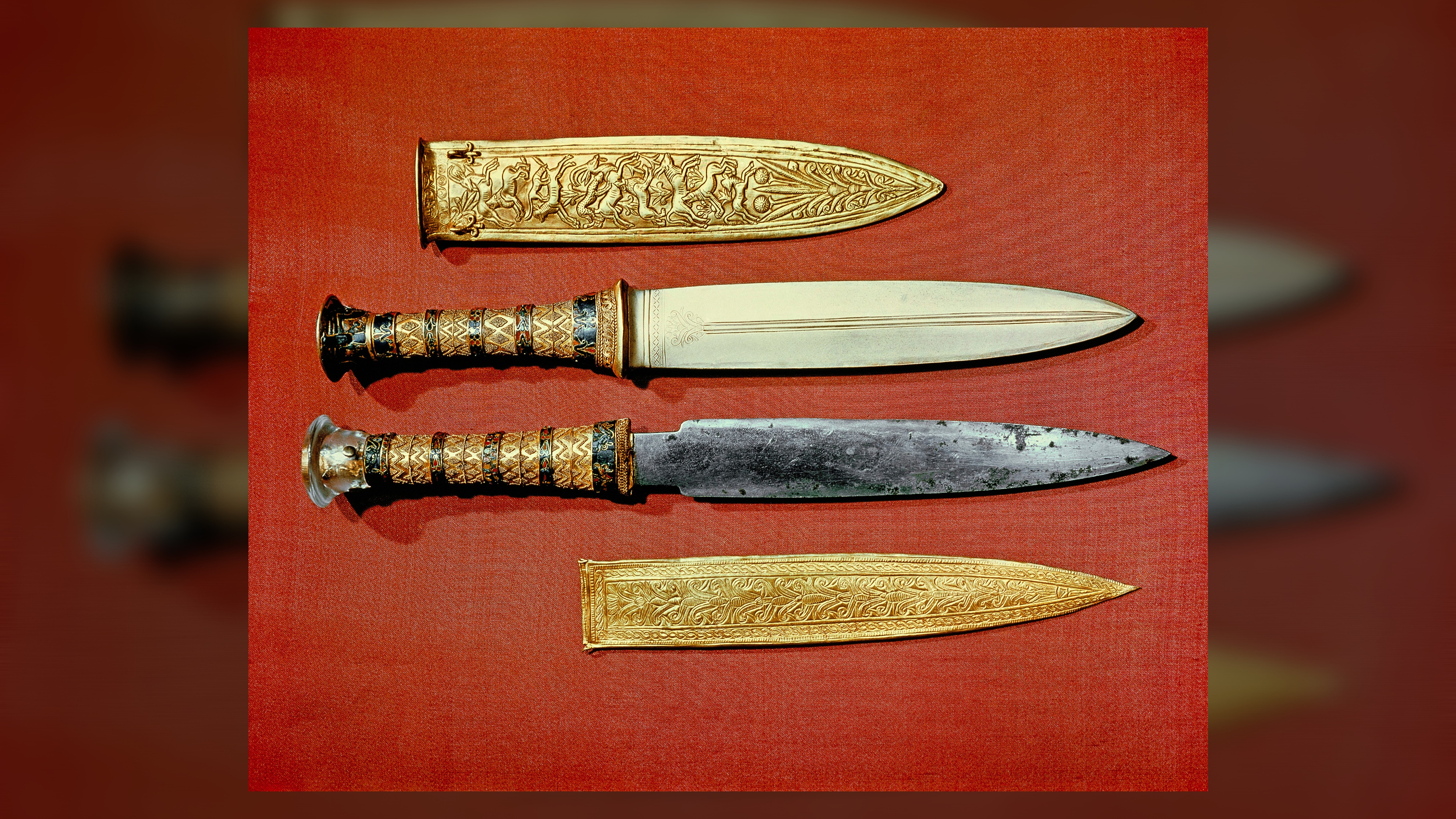
Tutankhamun was buried with two daggers – one with an iron blade and one with a golden one. Both daggers were found wrapped in different layers of pharaonic daggers mummy bandages, by the book”Iron from the tomb of Tutankhamun (opens in a new tab)” (American University Press in Cairo, 2022).
The iron-bladed dagger was placed near Tutankhamun’s right thigh, the researchers note in the book. Iron, which is used in art the dagger was out of this world, made of meteorite, and the dagger has a rock crystal pommel, as well as a gold handle with intricate designs carved into it. A dagger with a golden blade, which also has a golden handle with intricate carvings, was found above Tutankhamun’s stomach, the researchers wrote.
Both daggers show signs of wear, Katya Broschat (opens in a new tab), a curator at the Römisch-Germanisches Zentralmuseum and co-author of “Iron from the Tomb of Tutankhamun,” wrote in an email to Live Science. Broschat said it is not known if the dagger was ever used for hunting or other activities.
3. Board games
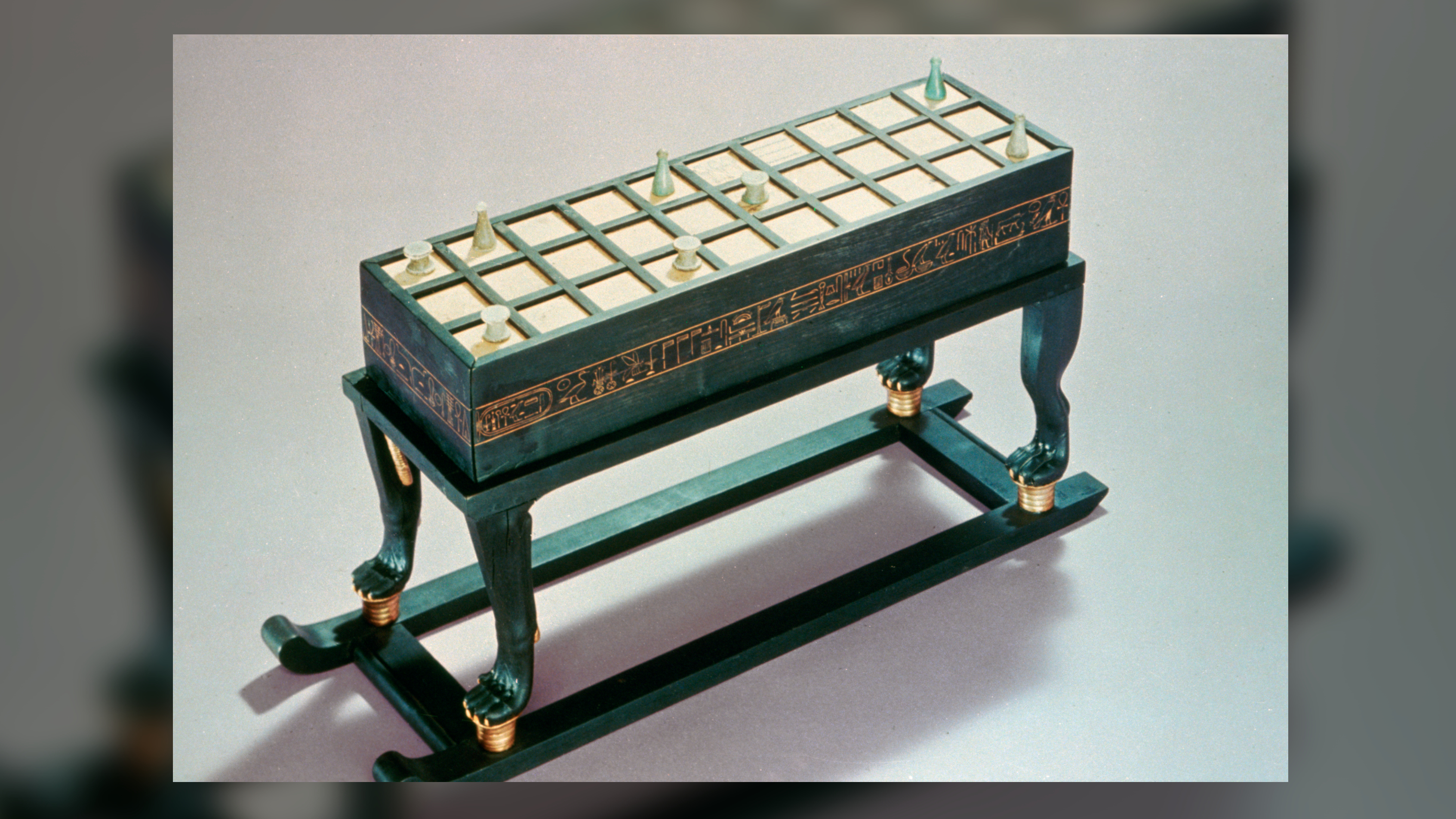
There were at least four board games in Tutankhamun’s tomb, the book saysAncient Egyptians at Play: Board Games Across Borders (opens in a new tab)” (Bloomsbury, 2016). Some of the boards and game pieces found in the tomb were made of ivory, and the boards appear to have been designed for the game of twenty and senet.
The rules of any game are not completely clear. The Great Egyptian Museum notes this senet played with a board of 30 squares (opens in a new tab) and the objective “was to safely move all pieces off the board without allowing the opponent to do the same.”
The rules of the “game of twenty” are also uncertain. Among scholars who have studied the game, “it is generally believed that the two players started on each opposite side of the board” and that “they then moved their pieces down the center aisle to the last square and beyond the board to win the game.” – Anne Dunn -Vaturi, researcher of the Metropolitan Museum, wrote in the article (opens in a new tab) published on the website of the Metropolitan Museum in 2014.
4. Mannequin for clothes

One of the lesser-known treasures from Tutankhamun’s tomb is a mannequin that helped select, fit, and store the king’s wardrobe and jewelry. “There was, of course, a very sumptuous wardrobe with a huge closet, both in life and after life,” Laura Ranieri Roy (opens in a new tab)founder and director of Ancient Egypt Alive, an educational organization, told Live Science in an email.
“There were hundreds of items of clothing – 12 luxurious robes, dozens of sandals, underwear, socks, even Tut’s baby clothes,” said the Briton. archaeologist Howard Carter was found in Tut’s grave, noted Ranieri Roy. “It makes sense for such a ‘clothes horse’ to have a mannequin on which to hang, display, ornate robes and jewelry, even perhaps for his dressers to sew and prepare outfits and make adjustments to the king’s clothing.”
5. Golden sandals
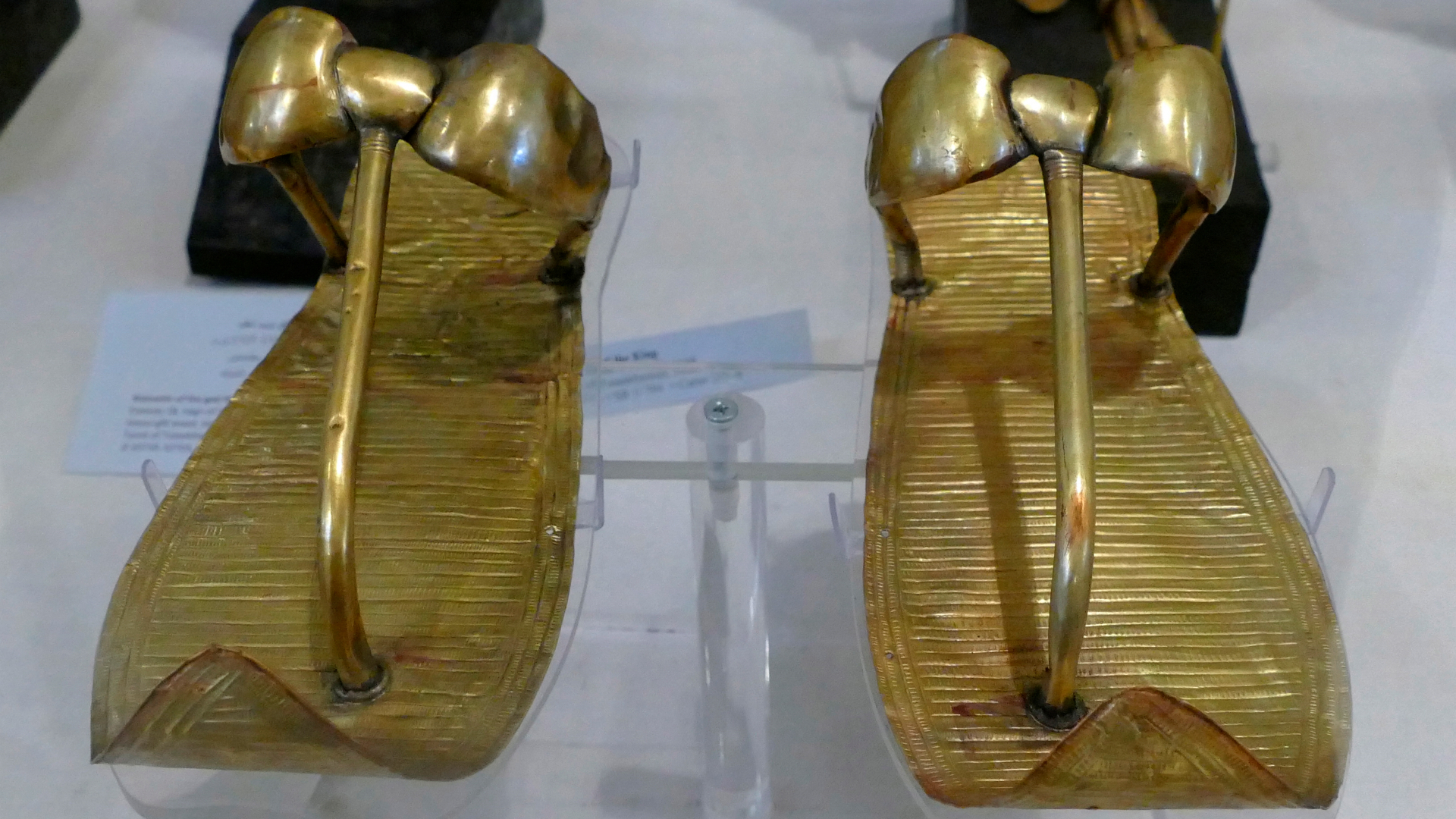
Tutankhamun’s mummy was found wearing golden sandals. “The total length was about 29.5 cm [11.6 inches],” Andre Veldmayer (opens in a new tab), director of the Ancient Egyptian Footwear Project, told Live Science in an email. Tutankhamun likely would not have worn these sandals when he was alive, Veldmeyer said. Such sandals were probably made especially for his burial.
These gold sandals were “cut from gold leaf and struck, probably on a soft surface protected by a layer of leather,” Veldmeier said, noting that the process “is not so different from how thin metal is made today.” hammered into shape and decorated.’
6. Tutankhamun’s coffin
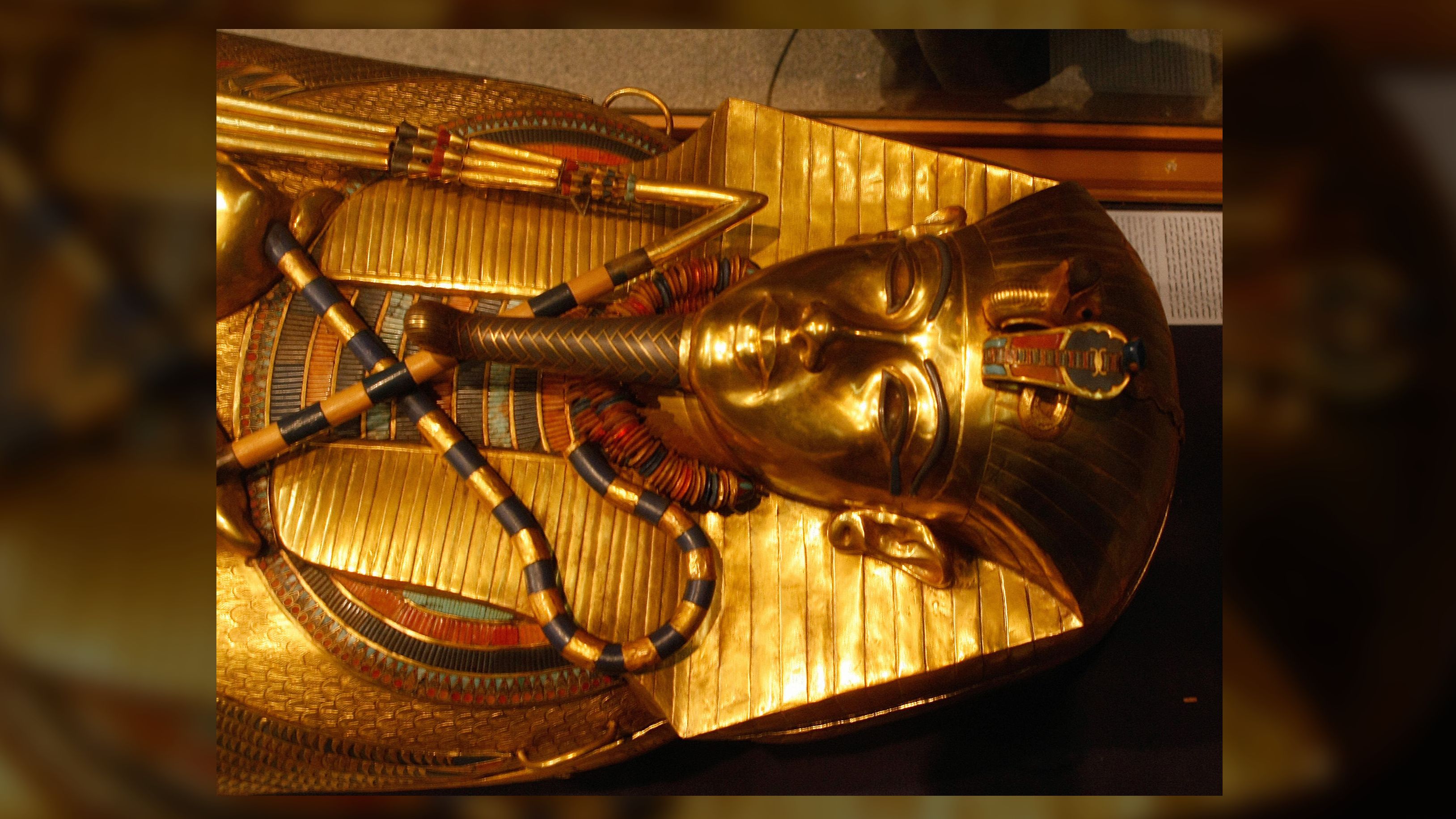
Tutankhamun was buried in three coffins, one inside the other. The combined coffin weighs about 1.25 tons (1.3 metric tons), Joyce Tyldesley (opens in a new tab)professor of Egyptology at the University of Manchester in Great Britain, writes in his book “ (opens in a new tab)Tutankhamun: The Quest for an Egyptian King (opens in a new tab)“ (opens in a new tab) (Basic Books, 2012). The large size of the coffins, combined with the relatively small size of Tutankhamun’s tomb, made it difficult for Carter to open them, Tyldesley noted.
All three coffins depict a long-bearded Tutankhamun holding a hook and a flail. The Ministry of Tourism and Antiquities of Egypt notes that the outer coffin is made of gilded wood (opens in a new tab) and has blue and red glass on the hook and flail. Tyldesley said the second coffin was also made of gilded wood and was found with several plants, including decaying lotus flowers. The ministry notes that the third, innermost coffin is made of solid gold and was found wrapped in canvas. Tutankhamun was placed in this very coffin with his death mask among other items.
7. Tutankhamun’s throne
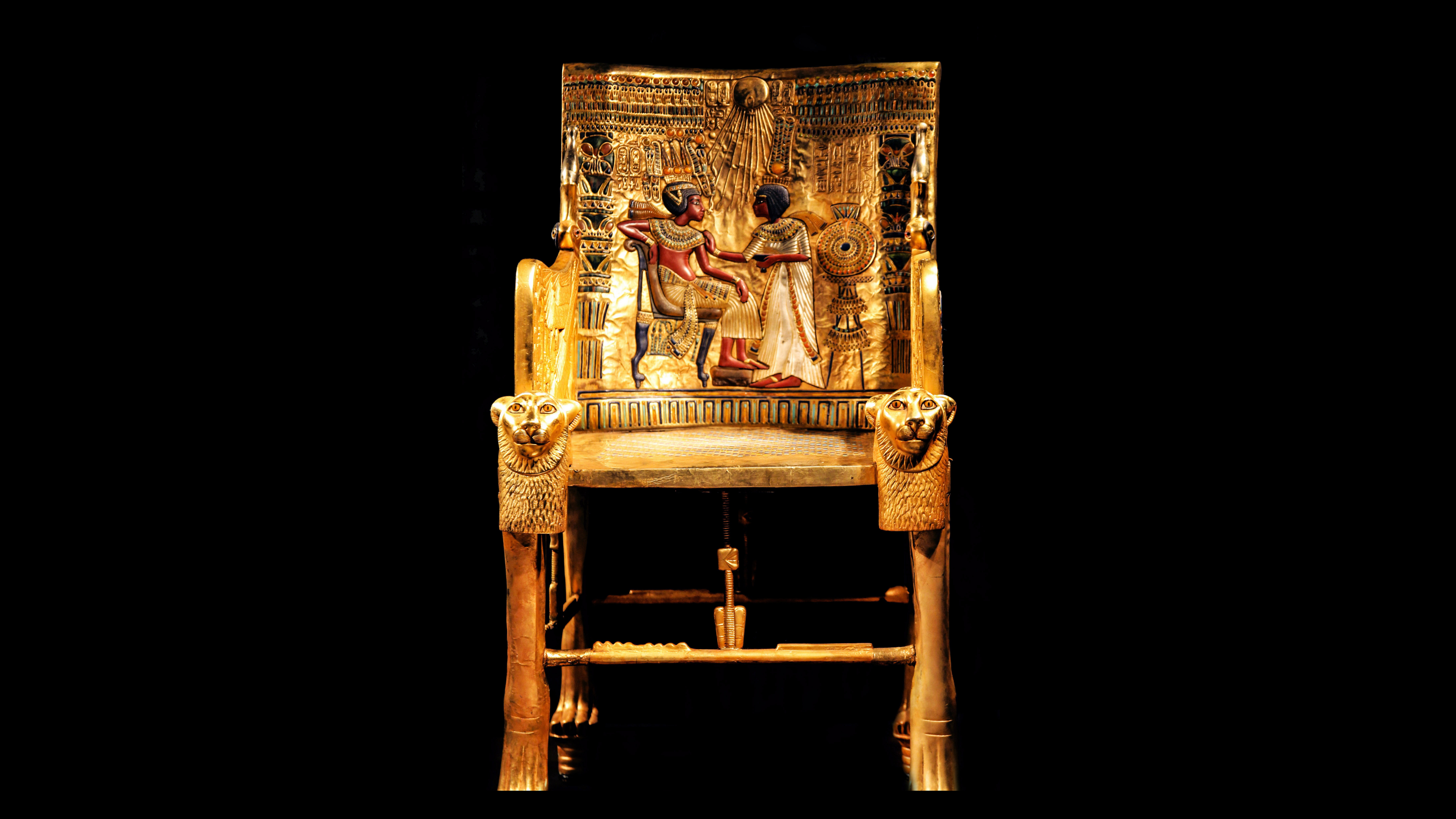
Two thrones were found in Tutankhamun’s tomb, Eaton-Kraus said. One was made of ebony, and because it resembled a bishop’s chair, Carter called it the “ecclesiastical throne,” although there is no evidence that it had any particular religious purpose.
Another throne, sometimes called the “golden throne,” features Tutankhamun and his wife Ankhesenamun, Tyldesley noted in her book. In his notes, Carter wrote that Ankhesenamon appears to be putting ointment or perfume on Tutankhamun.
This throne is about 3 feet (1 meter) high and was wrapped in cloth. It is “a wooden chair with a solid, slightly sloping back, armrests, openwork side panels and four legs carved to resemble lion feet,” Tyldesley wrote. “The chair was covered in gold and silver foil and inlaid with colorful stones, glass and earthenware [glazed ceramic].”
“Since most ancient Egyptians squatted on the floor or sat on low stools, chairs were a luxury item that indicated not only wealth but also power,” Tyldesley wrote.
8. Chariots
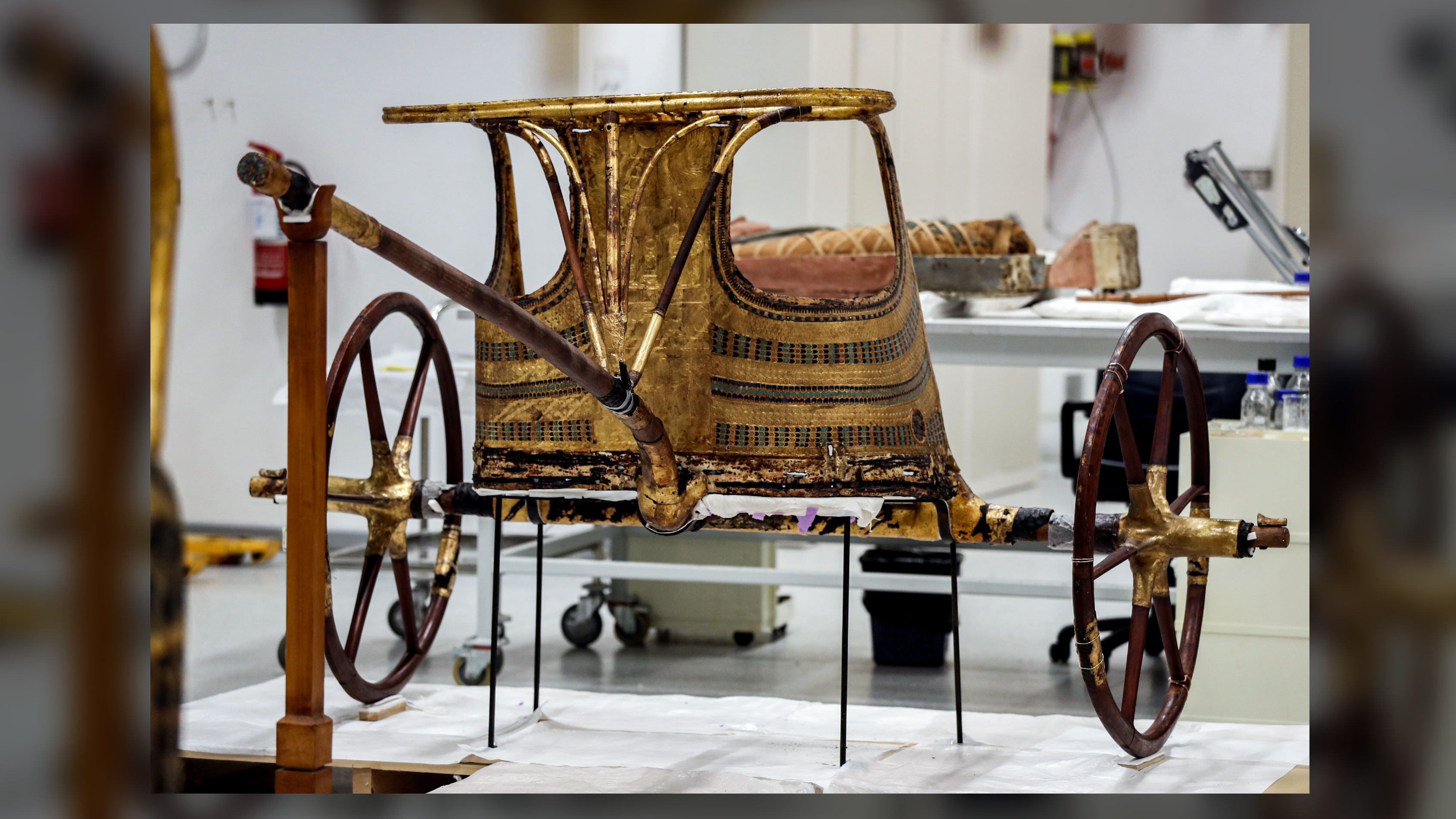
According to a study published in 2020 in the journal Comité international pour l’égyptologie (French for “International Committee for Egyptology”), six chariots were found in Tutankhamun’s tomb. Carter called the two most complex chariots “states,” the team noted in their paper. An in-depth analysis and restoration of one of the state chariots revealed that it had a canopy over it that could have provided shade for those who rode it.
The chariot also has images of six foreign captives on the right side, as well as hieroglyphs with the names of Tutankhamun and Ankhesenamun. It also features a solar falcon with outstretched wings and a hieroglyphic inscription stating that the falcon represents Horus, the Egyptian god associated with the sun.
“This whole design can be interpreted as the image of a royal couple that was loved by the people of Egypt, ensuring the life and stability of the king and queen under the sun god who hovers over them and protects them,” the team wrote in their paper. .
9. Pipes
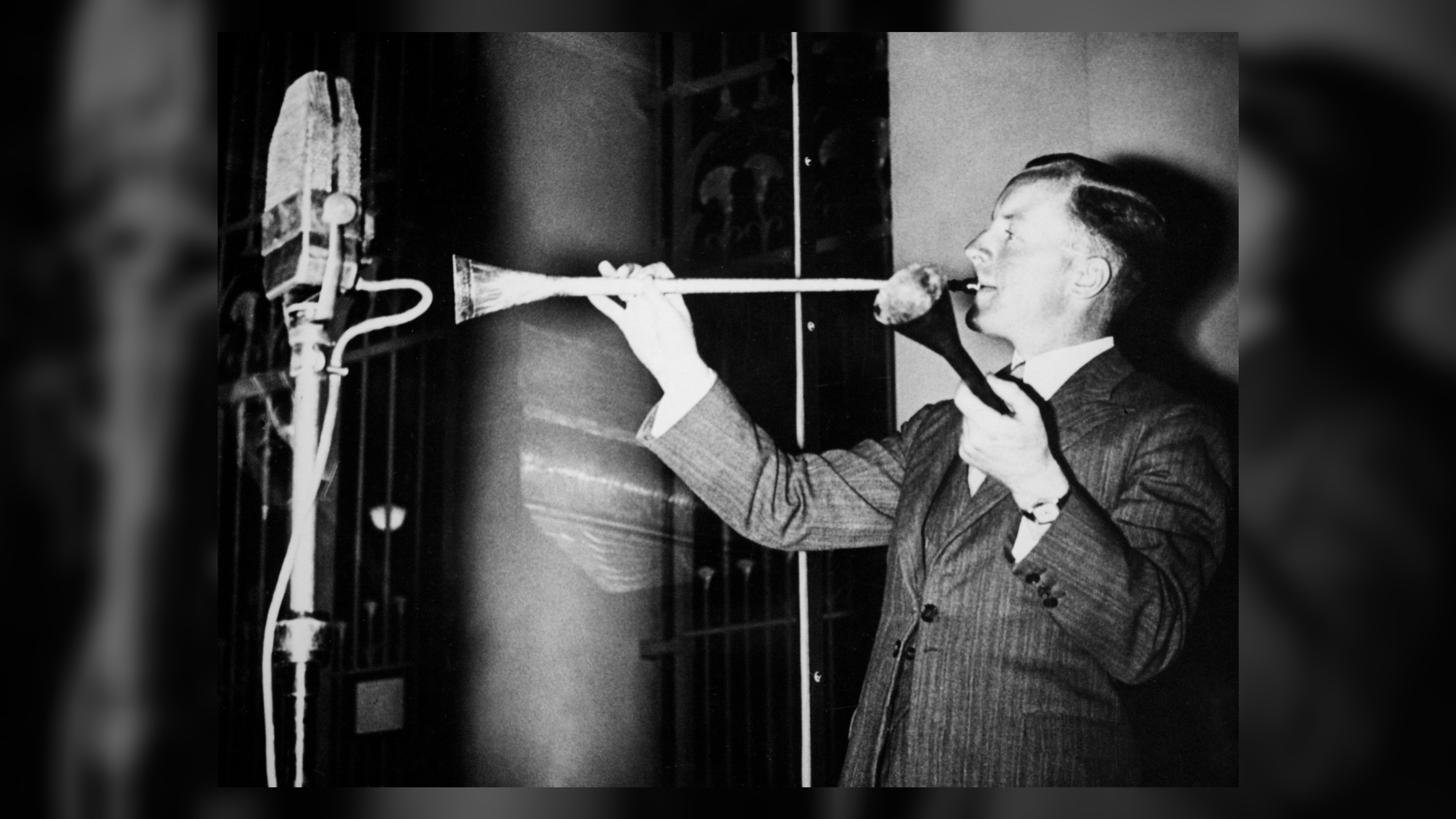
Two trumpets — one made of silver and the other made of gilded bronze — were found in Tutankhamun’s tomb and are among the oldest surviving labrazones, instruments played by vibrating the lips, according to the book “ (opens in a new tab)Science of wind instruments (opens in a new tab)“ (opens in a new tab) (Springer International Publishing, 2021).
Musician James Tappern played the trumpets (opens in a new tab) in a 1939 BBC broadcast that can be heard on YouTube. However, he had to use a modern wooden mouthpiece to play the trumpets, so it’s unclear whether Tappern’s loud sounds were possible in Tutankhamun’s time, the researchers said. Today, playing these instruments is prohibited due to their fragility.


